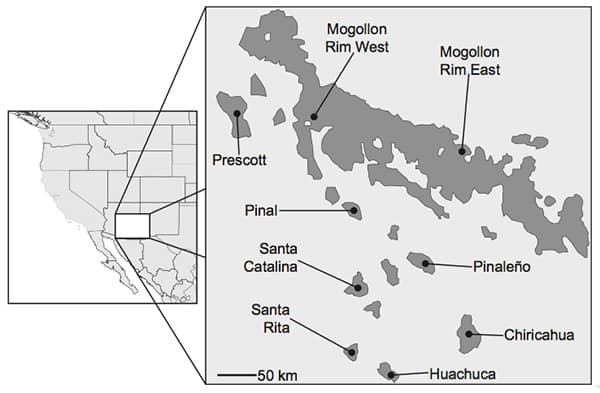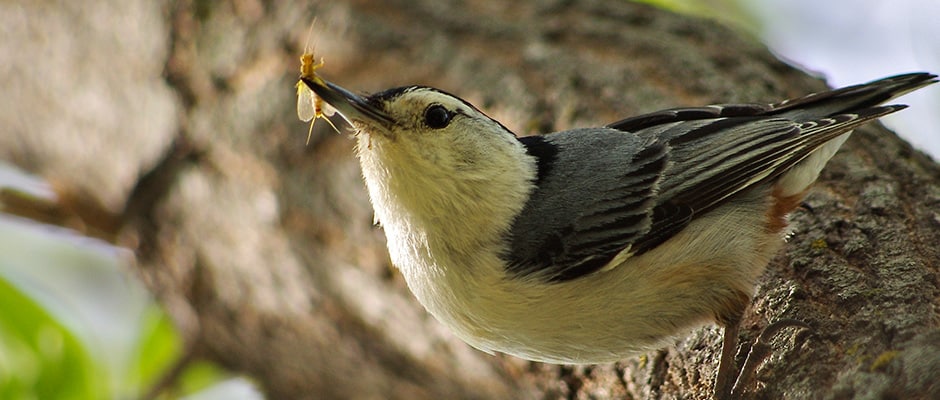Share this article
Why Environment Matters With Songbird Genes
Similar kinds of habitats may be more important than geographic proximity when it comes to finding which birds are of a genetic feather.
A new study examining white-breasted nuthatch (Sitta carolinensis) in so-called “sky islands” — forest landscapes that sit on top of mountains but are geographically isolated from each other by stretches of desert — found that the birds share more genetic similarities with birds in comparable habitats to their own rather than habitats that are nearby.
“It’s the first step to see how these organisms that can disperse better can move between these isolated environments,” said Joseph Manthey, a researcher in the Department of Ecology and Evolutionary Biology at the University of Kansas and the lead author of a recent study in Molecular Ecology.
It has long been know that the habitats of some species can become extremely limited by fragmentation to species that have difficulty moving between them. But Manthey and his coauthor wanted to see whether they could see genetic differences in a common species of songbird that had the ability to move between the different habitats if necessary.
The researchers took genetic samples from a few individual nuthatches on different sky islands in Arizona near the transition of the southern Rocky Mountains and the north of the Sierra Madre Occidental. The forested areas differed in that some were predominantly made up of pine, and others had more oak trees. The sky islands sampled were separated by distances of between five and 50 kilometers of desert.

A map of the Madrean Archipelago sky islands of southern Arizona and sampling localities for the KU study. Dark grey areas correspond to montane pine-oak and pine habitats.
Image Credit: KU News Service, University of Kansas
The results showed that nuthatches that preferred the oaky forests were more genetically similar to each other than nuthatches that lived in nearby pine-dominated forests, and vice versa.
“The nut hatches are more genetically similar in areas with more similar environments even if they’re not geographically close,” Manthey said.
The study could be a benchmark for other species, he said, since it shows that evolution could be taking places “at very small scales.”
“It’s interesting that this local adaptation is happening in a very widespread and common species,” he said.
The information has conservation value, he said, because it means that different populations of birds may adapt to changing environments nearby as they are pushed out by human development, climate change or other factors.
“You might not be able to take a nuthatch from my backyard and put it out there [in the sky islands],” Manthey said.
Header Image:
A new study on white-breasted nuthatches finds that birds of similar genetic makeup favor similar kinds of habitat more than geographic proximity.
Image Credit: KU News Service, University of Kansas








